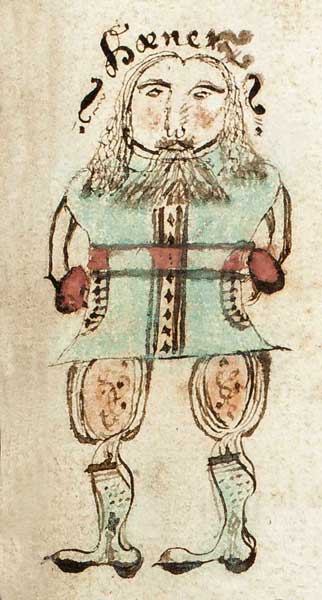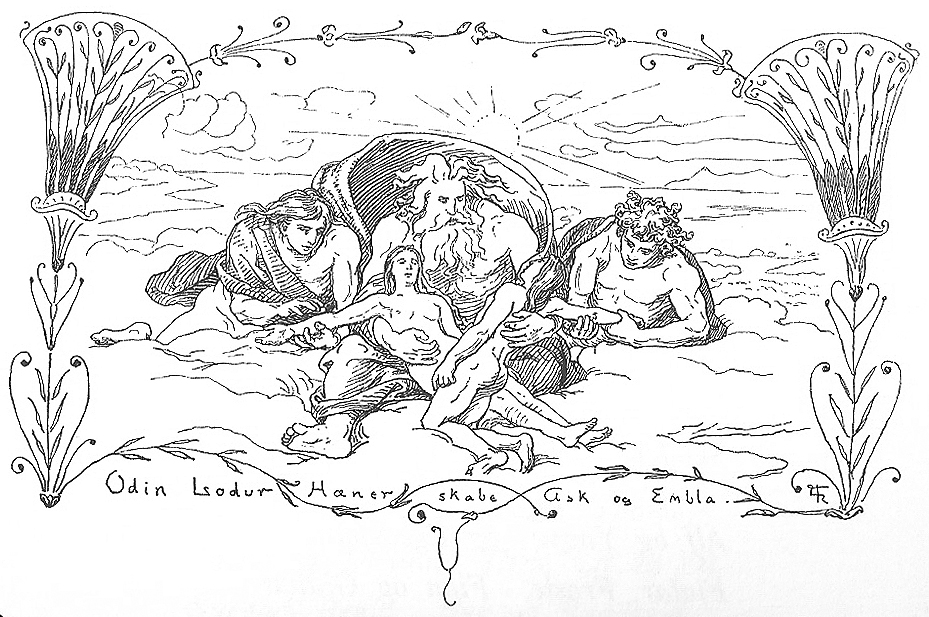According to some Norse myths, poems, and texts, Hœnir was the son of Borr and Bestla, making him a brother of Odin (or Óðinn and uncle of Thor. He appears in the Völuspá (or Vǫluspá) as one of the gods (with Odin and Lodurr) that made the first humans.
In Norse mythology, Hoenir (or Hǿnir) was also the ruler of Vanir. Alternative names for him are Hænir in modern Icelandic and Höne in modern Swedish.
What is Hoenir the God of?
Hœnir is the god of silence, spirituality, poetry, and of passion.
There are many contradictions when it comes to researching Hoenir. Kennings (or Norse adjective and noun combinations) describe him as a long-legged or swift god, the “marsh king” and “mud king.”
E. O. G. Turville-Petre says he is “the most fearful of all the gods “in his 1975 book Myth and Religion of the North: The Religion of Ancient Scandinavia.
Although the Völuspá, one of the poems in the Poetic Edda, describes him as not so bright, he can apparently inspire creativity, intelligence, and spiritual fulfillment.
He appears in the Prose Edda as one of the 12 Æsir gods who sat on thrones in the banqueting hall of Asgard.
Before the war of the gods, Njord was the ruler of Vanaheim but not the king. As explained below, Hœnir became the first king of Vanaheim, although his reign was short-lived. Subsequent rulers had relative autonomy thanks to the influence of Frigg and the legacy of the Æsir-Vanir War.

Is Hoenir Odin’s brother?
Some folklorists believe Hoenir is Odin’s brother because, in the tale of Midgard’s creation, one version describes Odin’s companions as Hoenir and Lodurr (or Loðurr), while another one says they are Vili and Vé, who are Odin’s brothers.
Hoenir Attestations and Mentions
Skáldskaparmál
A list of kennings describing Hoenir appear in Skáldskaparmál (Prose Edda):
Hvernig skal kenna Hœni? Svá at kalla hann sessa eða sinna eða mála Óðins ok hinn skjóta Ás ok hinn langa fót ok aurkonungr.
How should Hœnir be known? He should be called bench-mate, companion, or friend of Odin, and the swift ás [‘god’] and long-legs and mud-king.
Godshapes I – Mimisbrunnr Info
Völuspá
When Odin, Hoenir, and Lodurr (or Loðurr) had finished making Midgard, they created the first human beings, Ask and Embla. Ask, the first man was created using an ash tree, and Embla, the first woman, was born of an elm. The brothers then imbued the couple with four familiar human traits.
This account from Benjamin Thorpe’s 1866 translation of Völuspá names Hoenir and Lodurr as the brothers of Odin.
Spirit they possessed not, sense they had not,
Völuspá – Mimisbrunnr Info
Blood nor motive powers, nor goodly color.
Spirit gave Odin, sense gave Hœnir,
blood gave Lodurr, and goodly color.
In addition, the word “sense” in this passage is translated as “óðr,” a quality usually attributed to Odin and similar in appearance to the Allfather’s name. These reasons lead some researchers to believe Hoenir and Odin were the same person.
In Gylfaginning, Vili and Vé are mentioned rather than Hoenir and Lodurr. Snorri Sturluson knew about Völuspá, so Hoenir might have been another name for Vili.
Ynglinga Saga/Gylfaginning
Hoenir was involved in an event after the war between the Æsir and Vanir. Eventually, the two sides declared a truce and agreed on an exchange of hostages. This story appears in the Ynglinga Saga (Kings’ Saga by Snorri Sturluson) and chapter 23 of Gylfaginning from the Prose Edda.
Vanaheim sent its most important people to Asgard: The ruler Njord, his son Freyr, and his daughter Freyja were exchanged for Hoenir, whom the Vanir thought would be a great leader. Asgard also exchanged the sage Mímir for Kvasir, described by Sturluson as the wisest man in Vanaheim.
According to the Ynglinga Saga, Hoenir was handsome and charismatic, whereas Mímir was a grey-haired old man. The Vanir assumed Hoenir was the leader, and he became the ruler of Vanaheim, appointing Mímir as his advisor.
It soon became apparent that the chief could not make any decisions on his own, always answering “let others decide” when asked to make a ruling without Mímir advising him.
The Vanir felt cheated by the exchange and, rather than making an example of Hœnir, beheaded Mímir instead and sent the head back to Asgard. Odin cast spells over the head and infused it with magical herbs so it could impart wisdom and knowledge to him.
Hoenir in the Legend of Brunhilde
Hoenir appears in the legend of Brunhilde when he is among the traveling companions of Odin and Loki.
The dwarf Regin narrates the tales and mentions that Odin, Hoenir, and Loki journeyed across the nine realms when they came across an otter. Its beautiful pelt caught Loki’s eye, so he killed it with a stone.
Unfortunately for the three travelers, the otter was actually Otr, the son of the dwarf king Hreidmar, in animal form. This incident triggers a host of events that leads to the great warrior Sigurd finding Brunhilde.
Hoenir and the Jötunn Þjazi
The Prose Edda tells a story of how Hoenir again became Odin and Loki’s companion when they embarked on a series of adventures leading the jötunn Þjazi to kidnapping Idun, the keeper of the magical apples of youth.
Other Appearances
Hœnir also appears fleetingly in Haustlöng (skaldic poem) and Reginsmál (eddic poem in the Codex Regius manuscript). Hœnir protects a farmer’s boy by summoning seven swans in the medieval Faroese ballad Lokka Táttur.
Does Hoenir survive Ragnarök?
Not every god die is destined to die during Ragnarök, the prophecized Norse end of days; some sons of Odin and Thor survive, such as Baldr, Magni, Modi, Vali, and Vidar. Njord, the Vanir god, and father of Freyja, also lives through the battle.
According to Völuspá, Hœnir also survives Ragnarök, and he would restore the gods by performing a ritual. He was destined to travel to a new world and possess the ability of prophecy.

